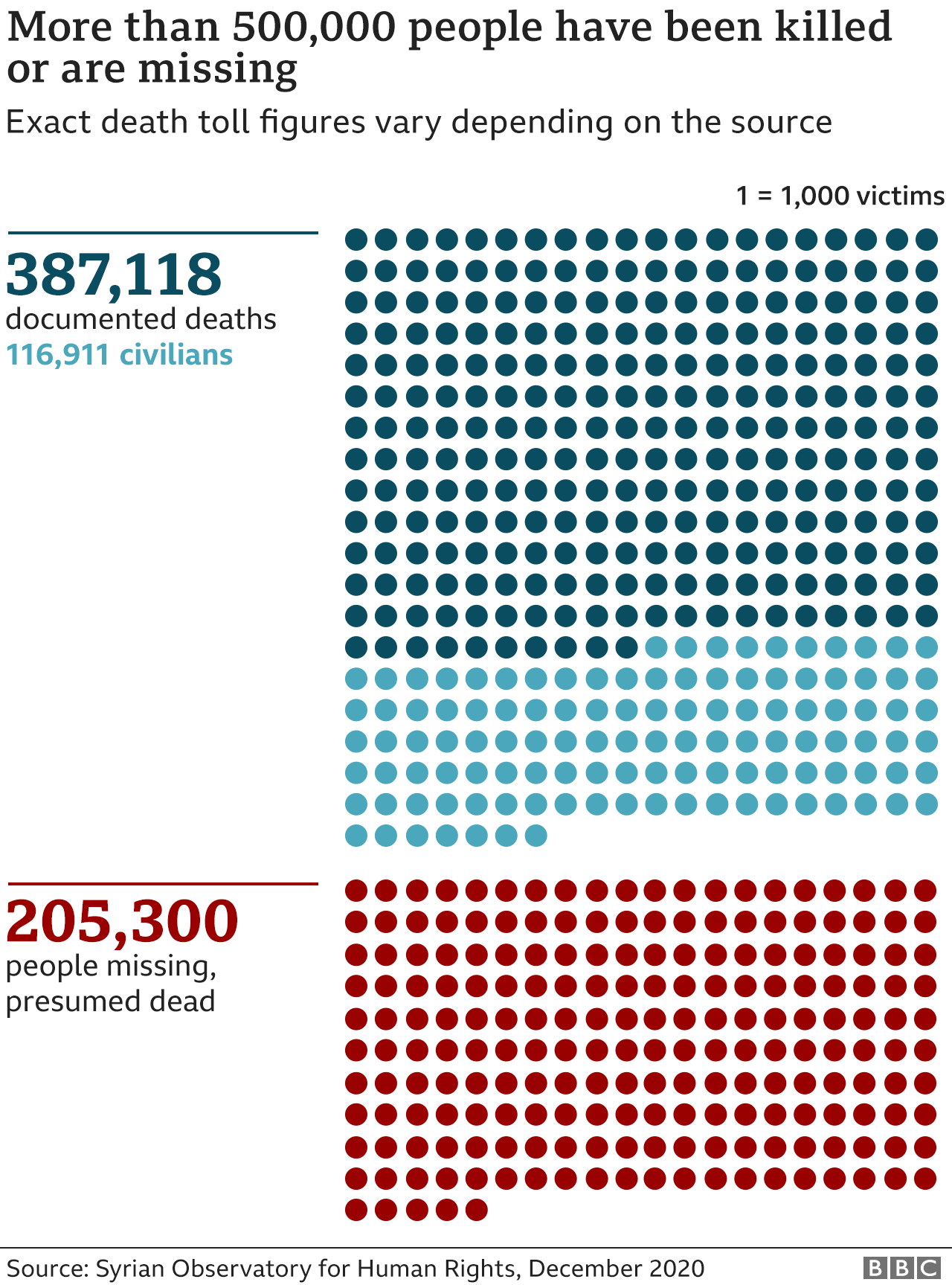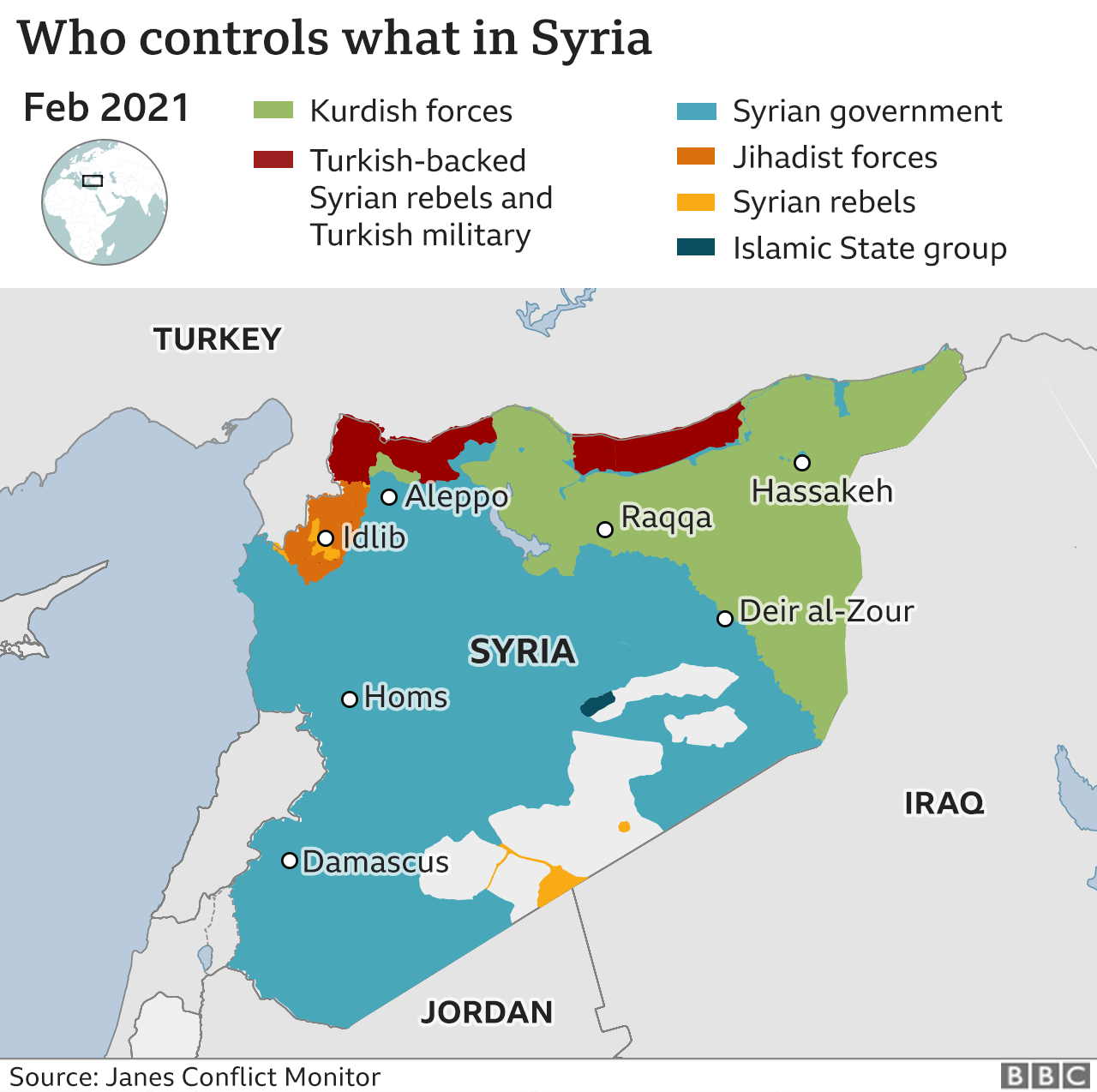🇸🇾 10 Years of Syrian Civil War
How and why did the war start? What’s happened since? And what next?
Hello folks. Today we’ll be switching things up slightly to remember the 10th anniversary of the start of the Syrian Civil War, which has so far killed almost 600,000 people and displaced more than six million, many of whom have been forced from their homes two or three times. But like most wars, we’ll probably never know the true cost of human life.

We’ll answer as many questions as possible, such as why the war started in the first place? What are some of the worst atrocities to take place? And what happens next, while sprinkling in as much context as possible.
Our friends at Charity Navigator have a list of charities taking donations, so if you have it in you to help, please consider donating something no matter how large or small.
Jobs and data below, let’s get straight to it…
Job Corner ✍️
First time appearance for Apple News who has partnered with The National Association of Black Journalists to offer a news fellowship! Other newsrooms this week include ABC News, CBC, CNN, CTV, ESPN, Forbes, New York Magazine, Politico, Sky News, The Guardian and The Information!
If you’re a paying member, your jobs sheet link will remain the same each week. If you’re interested in a free week’s trial, reply to this email and we’ll set you up!
Preview of the 303 new jobs added to the board this weekend 👇
Data Corner 🧮
Some datasets referenced in today’s newsletter…
Death Toll: Number of casualties broken down by entity, from the Syrian Observatory for Human Rights
Chemical Weapon Timeline: Timeline of chemical weapon use in the Syrian Civil War, from the Arms Control Association
Chemical Weapon Attacks: List of attacks and a wealth of other related data, from the Global Public Policy Institute
Population Decline: Live population data for Syria and other countries, from Worldometers
How and Why Did the War Start?
On March 15, 2011, pro-democracy marches started in the southern city of Daraa, inspired by similar demonstrations in other nations as part of the Arab Spring. Civilians were unhappy with their standard of living under the Assad family, having witnessed high unemployment, corruption and a lack of political freedom for decades, first under Hafez al-Assad who ruled from 1971 until his death in 2000, and later under his son Bashar, who remains president today.
The Assad Family: Bashar (top row, second from left), Hafez (bottom right)
What started as peaceful protests quickly turned into deadly violence, after Assad’s government openly shot civilians in the street to crush any dissent. Soon after, protests erupted nationwide, notably in the capital of Damascus where thousands called for the overthrow of Assad, but they too were met with fatal force.
Video: The Destruction of Daraa
As the situation quickly deteriorated, international diplomacy tried to solve the situation, but so too did numerous militant groups, some merely protecting themselves and their cities, others more opportunist and taking advantage of the precarious circumstances. Armed factions and entities involved in the war have continued to rise, with the total number involved somewhere in the hundreds.

What’s Happened Since?
There are simply too many atrocities that have taken place to list all of them. Perhaps the most shocking came in December 2012, when the first allegation of chemical weapons used on civilians by the Assad administration was made. At least seven people were reportedly killed in the city of Homs, prompting the head of Syria’s military police to defect to the opposition, confirming the chemical attacks and accusing Assad of systematic murder.
A subsequent report by Human Rights Watch confirmed the use of chemical weapons was “likely Syrian-produced”, and included horrific photos of bodies of dead children that were most likely killed by Sarin and other weapons-grade nerve agents such as Chlorine. A 2019 study from the Global Public Policy Institute suggested that close to 500 chemical attacks have ensued.

The other most notable atrocity is the Syrian government’s alleged use of Barrel Bombs, which are made up of TNT and assortments of sharp industrial elements. The regime has consistently denied using the weapon, but multiple first-hand accounts say otherwise, and images captured by the Qasioun News Agency essentially confirmed the government’s use of the weapon.
One Syrian surgeon in Aleppo said “Barrel bombs are the most horrible and hurtful weapon… [We deal with] multi-trauma, so many amputations, intestines out of the body, it’s too horrible.”
And a factory had this to say after an attack on his neighbourhood in 2014: “I saw children without heads, body parts everywhere. It was how I imagine hell to be.”

Last Time on Inside The Middle East…
🌍 Inside The Middle East — March 11
🌍 Inside The Middle East — March 4
🌍 Inside The Middle East — Feb. 24
🌍 Inside The Middle East — Feb. 17
What Next for Syria?
The situation in Syria remains dire, pitting the country in one of the worst humanitarian crises ever recorded, with 13 million people in need of humanitarian assistance including more than six million children, according to Unicef. Meanwhile, forces loyal to Assad have regained approximately two thirds of the country, with the city of Idlib the last remaining rebel stronghold. Kurdish forces, who were pivotal in backing down ISIS, control most of the rest of the country and want an independent state.

After reaching a peak population of around 21 million people in 2010, that figure fell by about a fifth by 2018, though it’s slowly begun to rise once again in the past couple of years. Taking into account those who have been forced from their homes and those who have left the country altogether, more than half the population has been displaced since the start of the war.

Scores of Syrians are still fleeing, making the country’s refugee crisis very much an ongoing emergency. While Turkey has taken in more than 3.5 million Syrians and counting, the toll on other countries has been higher and has exacerbated their own problems.
Lebanon, for example, which is in the midst of several of its own crises, has taken in almost 1 million Syrians, a figure that’s among the most of any country per capita. But due to Lebanon’s rapidly rising inflation, many refugees are forced to choose between buying food and paying bills, and have been left dangerously unprotected and exposed to attacks by opportunist militant groups.
We’ll wrap things up here for today, and like we mentioned at the top, below is a long list of credible charities if you want to donate anything. Thank you for making it to the bottom. See you tomorrow for Picks of the Week. 🙏






